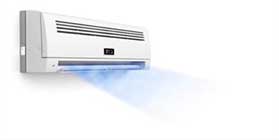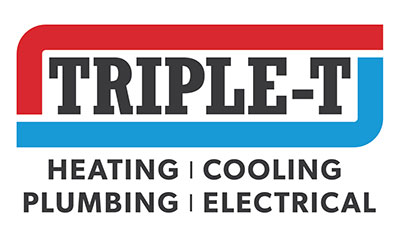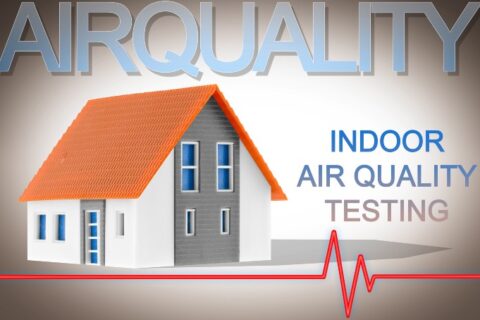Common Air Pollutants That Can Lead to Health Problems

When it comes to air quality concerns, many people focus on outdoor sources like car exhaust, smokestacks, and ozone. However, many homeowners don’t know that indoor air quality is often far worse than outdoor air. That’s why it’s important to learn about some of the most common air pollutants and the health problems they cause.
Signs Your Indoor Air is Polluted
The EPA estimates that some pollutants are two to five times more concentrated indoors than they are outside. If you’re concerned about poor indoor air quality, watch for these signs of trouble:
- Abnormal or lingering odors
- Stale, stuffy, or musty air
- Visible mold and mildew growth
- Dirty or broken HVAC system
- Damaged ventilation pipes or chimney flues
- Indoor relative humidity exceeding 50%
- Allergy or asthma symptoms that dissipate when you leave home
- Poor respiratory health after remodeling, moving, buying new furniture, or using cleaning products
10 Common Air Pollutants in the Home
Asbestos
Asbestos is a naturally occurring mineral fiber found in rock and soil. It was once used as a fire retardant in insulation, roof shingles, floor tiles, popcorn ceilings, and other building materials. However, scientists later discovered that inhaling asbestos fibers increases the risk of lung disease, mesothelioma, and asbestosis.
While asbestos is now banned, it can still be found in many older homes. It is usually harmless if left undisturbed, but if you’re planning a renovation project, you should schedule a professional inspection (and remediation, if necessary).
Biological Pollutants
Mold, mildew, bacteria, viruses, dust mites, pet dander, and pollen are examples of biological pollutants. These living sources of allergies and asthma tend to thrive in damp settings, such as unvented bathrooms, crawlspaces, and neglected humidifiers. Common symptoms include sneezing, coughing, runny or itchy nose, nasal congestion, and other upper respiratory distress. Exposure to bacteria and viruses may also cause illnesses and infections to develop.
Carbon Monoxide
Carbon monoxide (CO) is a colorless, odorless gas that releases as a byproduct of incomplete combustion. Indoor sources of CO gas include appliances that run on natural gas, oil, or propane, including furnaces, water heaters, stoves, and fireplaces.
Carbon monoxide can be extremely harmful or even deadly because it prevents the blood from absorbing and carrying oxygen to critical organs. Symptoms of CO poisoning include dizziness, poor coordination, drowsiness, headaches, confusion, nausea, unconsciousness, and death. Babies, older adults, pregnant women, and people with heart and lung conditions are particularly vulnerable to the effects of CO gas.
Nitrogen Dioxide
Nitrogen dioxide (NO2) is emitted from burning fuel, such as natural gas and kerosene. Like CO gas, it is colorless and odorless. Long-term exposure can harm the lungs, increasing susceptibility to respiratory infections and chronic bronchitis. Even low-level exposure may cause coughing, wheezing, difficulty breathing, and heightened asthma symptoms.
Solid Fuel Stoves and Grills
In addition to the potential for carbon monoxide poisoning, burning solid fuel like wood and charcoal indoors is a major source of air pollution. Wood cookstoves and charcoal heaters are not common in the US, but remember to only use your grill or camping stove outside and away from open windows and doors.
Pesticides
Pesticides are chemicals used to control insects, rodents, microbes, and other pests. These poisons are commonly used indoors as insecticides and disinfectants. Exposure can have various short- and long-term effects, including skin, eye, nose, and throat irritation; increased risk of cancer; and central nervous system damage.
Radon
Radon is a naturally occurring radioactive gas that seeps from the soil and rocks beneath your home. Radon can get inside through cracks in the foundation, plumbing penetrations, and other openings at or below ground level. As a result, basements tend to have the highest radon levels.
Radon exposure is the second leading cause of lung cancer after smoking. Because the gas has no smell, color, or taste, it is impossible to detect without special testing. Fortunately, at-home kits can identify elevated radon levels. If your home’s levels are high, you can install a radon mitigation system to safely vent the fumes outside.
Particle Pollution
When sunlight streams directly into your home, you can see just how much particulate matter is floating around. Much of the dust, dirt, and smoke in the air is visible, but other particles are microscopic.
Prolonged exposure to particle pollution can cause everything from aggravated asthma and other respiratory symptoms to irregular heart rhythms and heart attacks. Installing a high-efficiency air filter in your HVAC system is an effective way to trap airborne particles and remove them from the air you breathe.
Secondhand Smoke
Also known as environmental tobacco smoke, secondhand smoke comes from other people burning tobacco products in the vicinity. Breathing in this smoke is known as passive smoking, which can introduce trace amounts of more than 7,000 substances into your lungs. As such, the EPA classifies secondhand smoke as a Group A carcinogen, meaning it is known to cause cancer. Environmental tobacco smoke causes lung cancer, heart disease, stroke, asthma attacks, and other lung conditions.
Volatile Organic Compounds
Volatile organic compounds (VOCs) are gases emitted by building materials, household products, cleaning chemicals, and many other sources. Examples include formaldehyde, benzene, ethylene glycol, and methylene chloride. Some VOCs have an acrid smell, but others are odorless. Some of the short- and long-term health problems of these air pollutants include headaches and dizziness; nausea; eye, nose, and throat irritation; damage to the liver, kidney, and central nervous system; and cancer.
If you or another member of your household struggles with allergies, asthma, or other respiratory problems, Triple T Heating, Cooling & Plumbing would love to help. We can install an air purifier, humidifier, high-efficiency air filter, or other solutions to reduce indoor air pollutants. For more information about how can help you breathe easy, please call us at 801-798-7711 if you live in Utah County or 435-275-4011 if you’re a Washington County resident. You can also schedule HVAC services online.

